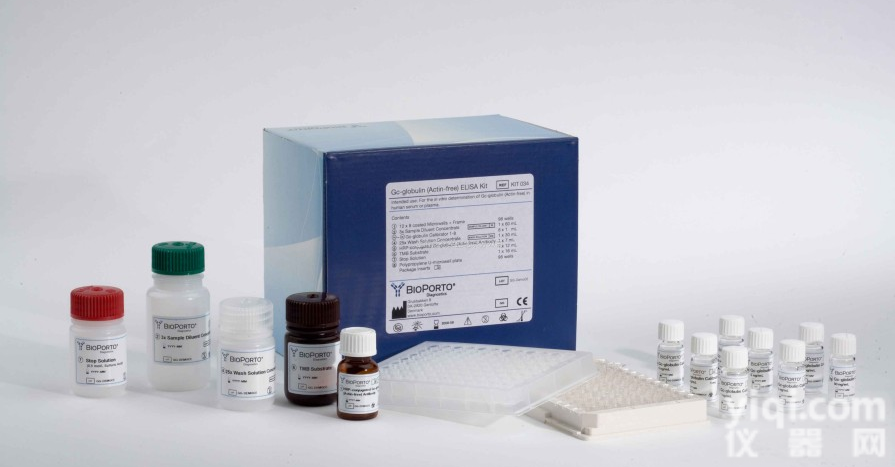本公司提供科研
NMUR2/GPR-FM4G蛋白偶联受体FM4/神经调节肽U受体2抗体,抗体质量可靠,订购
NMUR2/GPR-FM4G蛋白偶联受体FM4/神经调节肽U受体2抗体请联系在线客服或者销售人员。
抗体参数如下>>>>
中文名称:
G蛋白偶联受体FM4/神经调节肽U受体2抗体英文名称:
Anti-NMUR2/GPR-FM4货号:bs-11421R
抗体来源:兔
克隆类型:多克隆
蛋白分子量:predicted molecular weight: 46kDa
纯化方法:affinity purified by Protein A
交叉反应:hu
测试应用:ELISA=1:500-1000 IHC-P=1:100-500 IHC-F=1:100-500 IF=1:100-500
(石蜡切片需做抗原修复)
not yet tested in other applications.
optimal dilutions/concentrations should be determined by the end user.
产品背景介绍:Neuromedin U is a neuropeptide with high activity on smooth muscle. It is widely expressed in gastrointestinal systems and central nervous system (CNS). Peripheral activities of neuromedin U include smooth muscle stimulation, ion transport alterations in the gut and the regulation of local blood flow and adrenocortical function. Neuromedin U receptors 1 and 2 (NMUR1 and NMUR2) are multi-pass membrane proteins that belong to the G-protein coupled receptor 1 family of proteins. Both NMUR1 and NMUR2 act as receptors for the neuromedin U neuropeptide. NMUR1 is detected in peripheral organs, particularly in urogenital and gastrointestinal systems, with highest levels in testis. It’s expression in CNS is low, but the protein has been detected in cerebellum, hippocampus, dorsal root ganglia and spinal cord. NMUR2 is predominantly detected in central nervous system with highest levels detected in medulla oblongata, spinal cord and thalamus. It may also be detected in testis but has low levels of expression in peripheral tissues. Function : Receptor for the neuromedin-U and neuromedin-S neuropeptides.Subcellular Location : Cell membrane.Tissue Specificity : Predominantly expressed in the CNS, particularly in the medulla oblongata, pontine reticular formation, spinal cord, and thalamus. High level in testis whereas lower levels are present in a variety of peripheral tissues including the gastrointestinal tract, genitourinary tract, liver, pancreas, adrenal gland, thyroid gland, lung, trachea, spleen and thymus.Similarity : Belongs to the G-protein coupled receptor 1 family.
 Anti-NMUR2/GPR-FM4G蛋白偶联受体FM4/神经调节肽U受体2抗体
Anti-NMUR2/GPR-FM4G蛋白偶联受体FM4/神经调节肽U受体2抗体
 Anti-NMUR2/GPR-FM4G蛋白偶联受体FM4/神经调节肽U受体2抗体
Anti-NMUR2/GPR-FM4G蛋白偶联受体FM4/神经调节肽U受体2抗体
 小鼠抗促甲状腺素受体抗体蛋白Elisa检测,Mouse(TRAb)酶联免疫分析试剂盒
小鼠抗促甲状腺素受体抗体蛋白Elisa检测,Mouse(TRAb)酶联免疫分析试剂盒
 小鼠乙酰胆碱受体抗体蛋白Elisa检测,Mouse(AChRab)酶联免疫分析试剂盒
小鼠乙酰胆碱受体抗体蛋白Elisa检测,Mouse(AChRab)酶联免疫分析试剂盒
 低密度脂蛋白受体相关蛋白12抗体(YZ肿瘤蛋白 / 低密度脂蛋白受体相关蛋白12抗体(YZ肿瘤蛋白7)
低密度脂蛋白受体相关蛋白12抗体(YZ肿瘤蛋白 / 低密度脂蛋白受体相关蛋白12抗体(YZ肿瘤蛋白7)
 白介素17受体抗体,白介素1受体相关蛋白样1前体蛋白抗体,白介素1受体...
白介素17受体抗体,白介素1受体相关蛋白样1前体蛋白抗体,白介素1受体...
 人人低密度脂蛋白受体相关蛋白4(LRP-4)抗体(IgG) ELISA/人人低密度脂蛋白受体相关蛋白4(LRP-4)抗体(IgG)试剂盒
人人低密度脂蛋白受体相关蛋白4(LRP-4)抗体(IgG) ELISA/人人低密度脂蛋白受体相关蛋白4(LRP-4)抗体(IgG)试剂盒
 白介素-1受体拮抗剂抗体,白介素2受体β链抗体,白介素22受体结合蛋白...
白介素-1受体拮抗剂抗体,白介素2受体β链抗体,白介素22受体结合蛋白...
 G蛋白偶联受体37/帕金森相关内皮素受体样受体 / G蛋白偶联受体37/帕金森相关内皮素受体样受体抗体
G蛋白偶联受体37/帕金森相关内皮素受体样受体 / G蛋白偶联受体37/帕金森相关内皮素受体样受体抗体
 G蛋白偶联受体37/帕金森相关内皮素受体样受体 / G蛋白偶联受体37/帕金森相关内皮素受体样受体抗体
G蛋白偶联受体37/帕金森相关内皮素受体样受体 / G蛋白偶联受体37/帕金森相关内皮素受体样受体抗体
 组蛋白甲基化KMT3B抗体(雄激素受体激活蛋 / 组蛋白甲基化KMT3B抗体(雄激素受体激活蛋白)
组蛋白甲基化KMT3B抗体(雄激素受体激活蛋 / 组蛋白甲基化KMT3B抗体(雄激素受体激活蛋白)
 皮屑样蛋白2抗体,瘦素受体抗体,瘦素抗体,LETM1蛋白抗体,桩蛋白抗...
皮屑样蛋白2抗体,瘦素受体抗体,瘦素抗体,LETM1蛋白抗体,桩蛋白抗...